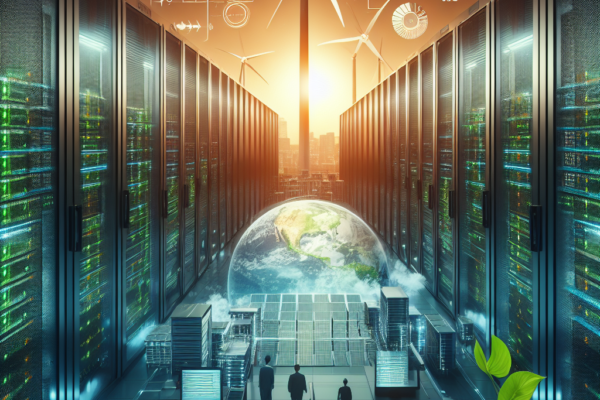Data Center Efficiency and Sustainability
Today’s concerns about the environmental impact of CO2 emissions from power generation have prompted many organizations to place new emphasis on the efficiency and sustainability of the data center.
Data center efficiency and sustainability refer to the effective and responsible utilization of resources in data centers to minimize environmental impact and maximize operational performance. Let me break down these concepts:
Efficiency is fundamentally a measure of work done versus the amount of energy used to do that work. If all that input energy is successfully converted into useful work, the efficiency is 100%. If none of that input energy results in successful work, the efficiency is 0%. Businesses seek to improve efficiency toward 100% so that every dollar spent in energy is driving useful data center work.
Measures such as power usage effectiveness (PUE) are available to help organizations gauge efficiency. PUE is calculated as the power entering the data center divided by the power used in the IT infrastructure. This yields a simple ratio that approaches 1.0 as efficiency approaches 100%, and the corresponding percentage is expressed as data center infrastructure efficiency. Businesses can improve the PUE ratio by reducing the amount of energy in non-IT uses, such as reducing lighting and cooling in non-IT spaces and implementing other energy-efficient building designs

Data Center Efficiency:
- Energy Efficiency: This aspect focuses on optimizing the energy consumption of data center operations. Efficient cooling systems, server virtualization, and hardware improvements contribute to reducing overall energy usage.
- Space Utilization: Efficient use of physical space within a data center involves maximizing the capacity of servers and other equipment to ensure that the available space is utilized effectively.
- Resource Utilization: Ensuring that computing resources, such as CPU, memory, and storage, are utilized optimally to avoid overprovisioning and wastage.
Data Center Sustainability:
- Renewable Energy: Sustainable data centers aim to use renewable energy sources, such as solar or wind power, to reduce their reliance on non-renewable resources and decrease carbon emissions.
- Waste Management: Proper disposal and recycling of electronic waste generated by data center equipment contribute to sustainability. This includes recycling old servers, networking equipment, and other hardware.
- Water Usage: Sustainable practices also extend to water usage, with data centers implementing water-efficient cooling systems and minimizing water waste.
Environmental Impact Reduction:
- Carbon Footprint: Data centers strive to minimize their carbon footprint by using energy-efficient hardware, adopting green energy sources, and implementing practices that reduce overall greenhouse gas emissions.
- E-Waste Reduction: Sustainable data centers focus on minimizing electronic waste by extending the lifespan of equipment, repurposing or recycling old hardware, and adopting circular economy principles.

Efforts towards data center efficiency and sustainability are crucial not only for environmental responsibility but also for cost-effectiveness, as energy-efficient practices often lead to reduced operational expenses in the long run. Adopting these principles aligns with broader initiatives to address climate change and promote environmentally conscious business practices.
